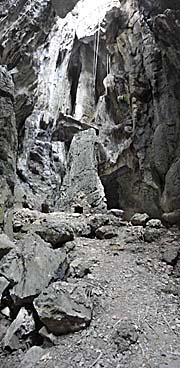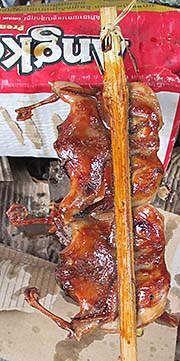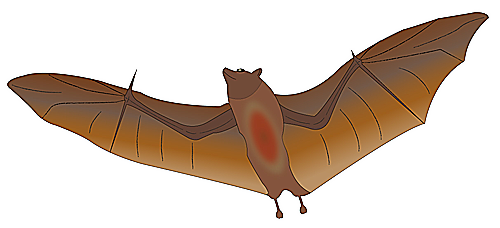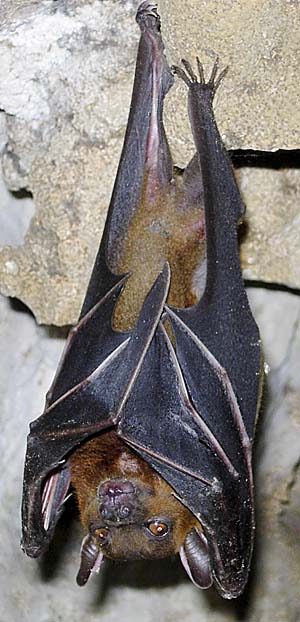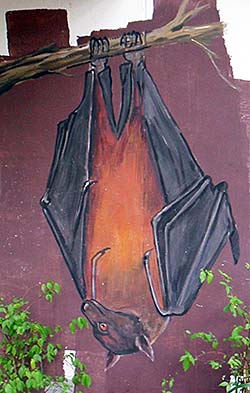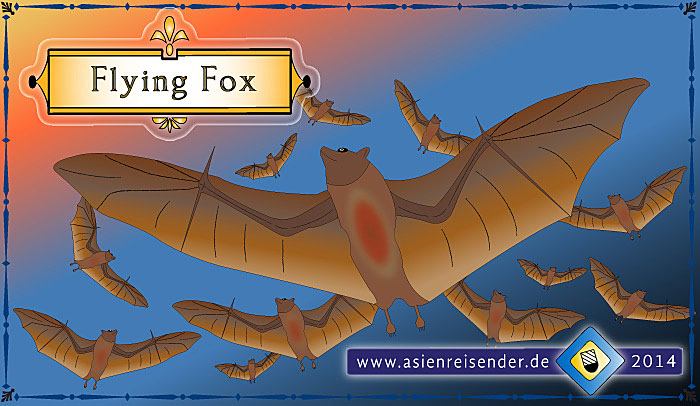1.
Bats in Southeast Asia
There are plenty of bats around in Southeast Asia. In every bigger cave, especially in the many limestone mountains in the south of Thailand, parts of Laos, Cambodia and Vietnam, are usually hundreds or thousands of bats hanging upside down from the cave's ceilings. That's at least what the nocturnal animals do at daytime. At dusk they leave their hiding places and swarm out over many kilometers on the search for food.
There is a strong smell around in the caves, coming from the bats defecation. In daytime they sleep, and in nighttime they get lively and swarm out to hunt insects and other little animals for food. Bigger bats also feed from small mammals, rodents and other, smaller bats.
An interesting fact about bats is, that they are not birds, but mammals.
Their wings are actually membranes, who connect the bat's hands and feet. Also the fingers are spanning the membran. These membranes consist of a double skin layer. It enables the bats to perform very artistic flying styles, changing the flight direction abruptly.
Bats produce a typical sound, a very high noise; in fact it's much more than humans can hear, because bats scream in ultrasound. The human ear catches only the deepest part of the spectrum of the sound. It's comparable with a whistle for dogs. The bats sound echos allows orientation for the small animals.
The eyes of bats are therefore not as good as human eyes; they see the world in black and white, some kinds even percept ultraviolet light. Ultraviolet radiation is emitted intensely by blooming flowers. They attract besides insects also bats, who nourish also from the nektar.
Bats also have a sense for magnetism and can orientate over long flights on earth's magnetic field, like migrant birds do.
Among the 900 different kinds of bats on earth are only three who feed from blood of other animals (or humans). That gave the bats the image of vampires. These three kinds of vampires feed from blood only, but appear exclusively in greater parts of the Americas, not in Asia.

Some dead bats on the market of Xam Neua, Laos. In the believe of some people, bats or parts of them have medical effects. Particularly Chinese medicine is dealing notoriously with parts of many different animals. Some people believe in the protecting powers of bat ingredients filled into amulets. Image: Asienreisender, 2006
Gender differences are difficult to identify. Females are a bit bigger than males.
Bats have a remarkable low reproduction rate. They get normaly only one child per year. This is compensated by a high live expectation. Bats live 20 to 30 years. Many bat species are endangered due to the destruction of their habitats by humans.
Natural enemies of bats are birds of prey as owls and others. As mentioned, bigger bats feed from smaller ones. Cats also prey them, if they have a chance to get one.


